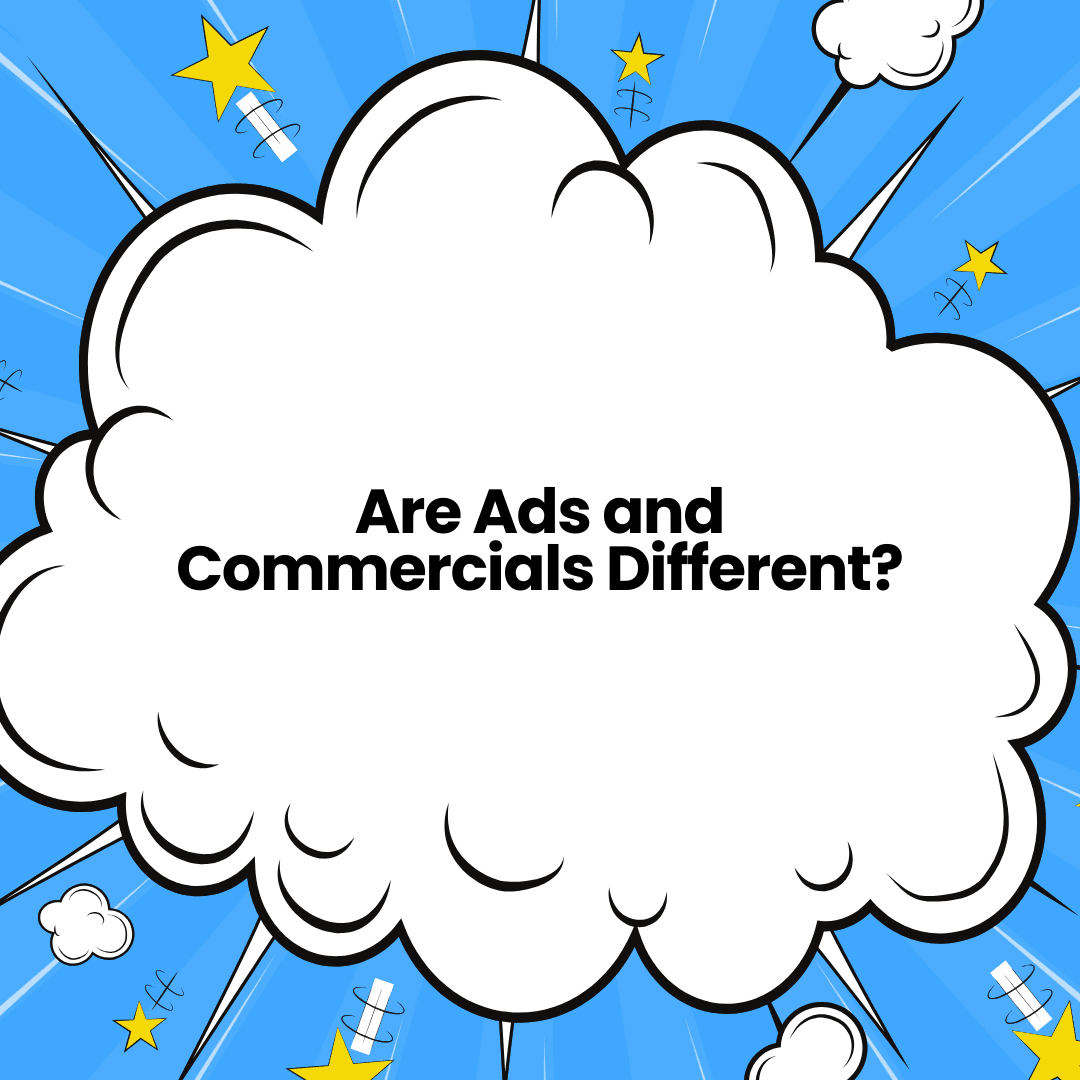When we hear the words “ads” and “commercials,” many of us might assume they’re interchangeable. After all, both are tools used in marketing to promote products, services, or ideas. However, while they share similarities, there are distinct differences between the two that are worth exploring.

What Are Ads?
An ad, short for advertisement, is a broad term that encompasses any form of paid communication intended to influence an audience. Ads can appear in a variety of formats and across a wide range of platforms. Here are some examples:
- Print Ads: Found in newspapers, magazines, or flyers.
- Digital Ads: Banner ads, social media ads, and search engine ads.
- Out-of-Home Ads: Billboards, bus stop posters, or transit ads.
- Audio Ads: Radio spots or podcast sponsorships.
Essentially, ads can be anywhere and take on many creative forms. They are versatile and not restricted to any particular medium or length.
What Are Commercials?
Commercials, on the other hand, are a specific type of advertisement that usually refers to video or audio content. They’re most commonly associated with television and radio, but in today’s digital age, they’ve expanded to include streaming platforms and social media.
Key characteristics of commercials include:
- Video or Audio Focus: Commercials typically tell a story or convey a message using sight and sound.
- Time Constraints: Most commercials are designed to fit standard time slots, such as 15, 30, or 60 seconds.
- Entertainment Value: Many commercials aim to captivate their audience with humor, emotion, or stunning visuals.
Key Differences
While all commercials are ads, not all ads are commercials. Here’s a breakdown of the main differences:
| Aspect | Ads | Commercials |
|---|---|---|
| Medium | Any (print, digital, etc.) | Video or audio |
| Length | Variable | Typically 15-60 seconds |
| Format | Diverse | Structured, often scripted |
| Distribution | Broad (online, offline) | Primarily TV, radio, or streaming platforms |
The Evolving Landscape
With the rise of digital media, the line between ads and commercials has blurred. A 30-second video ad on YouTube, for example, can technically be classified as both an ad and a commercial. Similarly, native advertising and sponsored content on platforms like Instagram and TikTok further expand what we consider traditional advertising.
Why Does It Matter?
Understanding the distinction between ads and commercials is crucial for marketers and business owners. It helps clarify goals, allocate budgets, and choose the right platforms for reaching a target audience. For instance:
- If your goal is quick, widespread awareness, a digital ad campaign might be the way to go.
- If you’re aiming for a more immersive storytelling approach, investing in a commercial could be more effective.
Conclusion
While ads and commercials are closely related, their differences lie in their formats, mediums, and applications. Knowing how to leverage each effectively can make a significant impact on your marketing strategy. Whether it’s a sleek TV commercial or a targeted social media ad, the right approach depends on your audience, message, and objectives. Feel free to contact us for a free consultation about ads.

